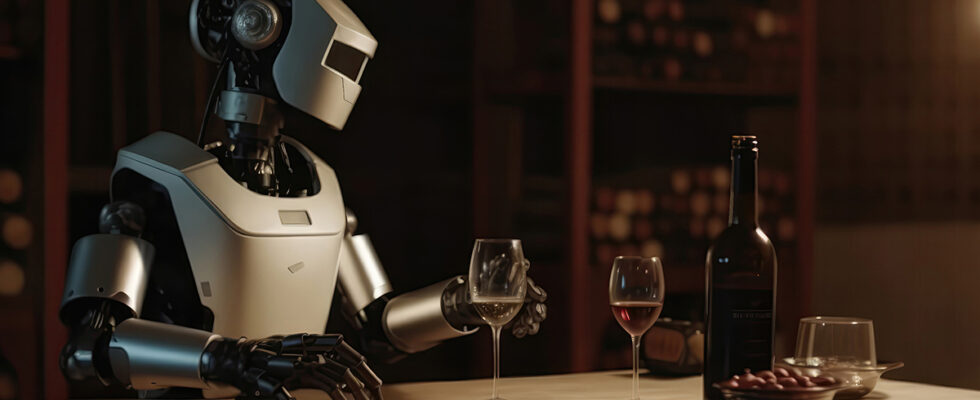Artificial intelligence has been trained to distinguish good and bad wines. It will help identify fake bottles by tracing them back to their origin. Here’s how.

Whether you are a consumer yourself or not, you know that some bottles of wine are worth more than others. And that the most sought-after vintages can to snatch at a high price during auctions for example. Like all markets of this type, the wine market is affected by an unfortunately widespread phenomenon: the sale of fake bottles. At the start of the year, a network of traffickers practicing the practice was dismantled. He imported the equivalent of 4.6 million bottles from Spaincheap table wine, before resell them by passing them off as French winesmore expensive obviously.
How can we effectively combat this phenomenon? By asking for help fromartificial intelligence Of course ! AI already has a language, so why not one nose to distinguish fake wines from real ones ? The one developed by researchers at the University of Geneva in Switzerland is based on the gas chromatography, a chemical analysis. In general, this technique is used to separate and identify the components of a mixturebut not here.
Artificial intelligence is able to distinguish fake wines from real ones
The AI was trained on 80 wines from 7 Bordeaux estates different ones whose data was collected over 12 years. The soil, the climate or even the manufacturing process itself influence the concentration of the components in a bottle. But rather than analyzing each of them to distinguish one wine from another, the algorithm detects a global “signature”. The results are displayed on a two-dimensional map where beverages with a similar signature are grouped together. The first time, scientists were surprised by the distribution of points.
Also read – This AI looks you in the eyes and guesses your heart health
“The first thing […] What stood out to us was that there are clusters that correspond to specific châteaux. This immediately told us that there is a chemical signature specific to each château, regardless of the vintage. It is the overall pattern of concentrations of many molecules that distinguishes a castle. Each one is a symphony: it’s not a single note that distinguishes them, it’s the whole melody,” explains Professor Alexandre Pouget.
AI distinguishes wines according to their domain and can trace them back
Even more surprising, the teams notice that the position of each cluster of points corresponds to those of the real domains. For example, the wines of 3 châteaux north of the Dordogne river are clearly separated from those of 4 châteaux west of the Garonne. In the end, “we find a map of Bordeaux,” notes the professor. Thanks to its analyses, the AI will be able to determine if a wine comes from the place indicated on its label, making it easy to identify fake bottles. However, it remains to be improved on one point.
If the program is able to say that a particular wine comes from a particular château with a success rate of 99%the latter is only 50% when asked to distinguish vintages. There is therefore significant room for improvement, but as it stands, the tool can already be used to support investigators responsible for detecting fraudulent products. Alexandre Pouget, however, sees further and imagines other applications.
Read also – AI: this revolution could make ChatGPT and Bard obsolete
‘We could use this to determine how to blend wines to optimize quality. The blending of wines is the key stage in the production of great Bordeaux and great Champagnes. Until now, this operation is carried out by a few wine growers who are paid a fortune for their skills. With tools like this it would be much cheaper to make large assemblies, which would benefit everyone.” Not sure that the winegrowers in question welcome the arrival of a virtual competitor, however. They can rest assured: for the moment, their profession is not on the list of professions threatened by the development of artificial intelligence.
Source: The Guardian
